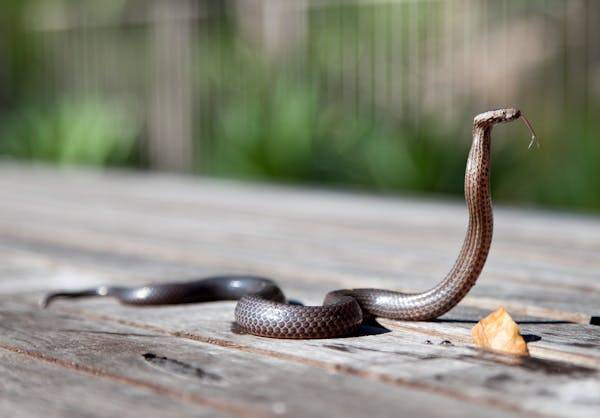Unraveling the Enigma of Cobras: Exploring Nature’s Mysterious Serpents
cobras snake
| Cobra snake | |
Introduction: Within the vast realm of the animal kingdom, few creatures ignite as much intrigue, dread, and fascination as the cobra. Revered and dreaded in equal measure, cobras have woven themselves into the fabric of human culture through countless myths, legends, and interpretations. From their iconic hooded stance to their deadly venom, cobras have firmly entrenched themselves in both the natural world’s hierarchy and the human psyche. Let’s embark on a journey to demystify these serpents and plunge into their captivating realm.
The Diversity of Cobras:
Cobras, members of the Elapidae family, represent a diverse array of venomous snakes primarily inhabiting Africa and Asia. While the term “cobra” often conjures images of the majestic King Cobra (Ophiophagus hannah), the genus comprises numerous species, each with distinct characteristics and adaptations. From the striking spectacle of the Indian Cobra (Naja naja) to the enigmatic allure of the Egyptian Cobra (Naja haje), cobras showcase a remarkable spectrum of traits shaped by their evolutionary journey and ecological niche.
The Iconic Hood:
Among the most striking features of cobras is their ability to expand a hood when threatened or provoked. This iconic display serves various purposes, including deterring predators and potential prey, as well as signaling to conspecifics. The hood formation results from elongated ribs and muscles connected to the snake’s skin, enabling rapid and precise elevation and flattening. While the sight of a hooded cobra may instill fear, it underscores the serpent’s adaptability and resourcefulness in confronting danger.

Venomous Arsenal:
Cobras are renowned for their potent venom, primarily employed for hunting and self-defense. The composition of cobra venom varies among species, typically comprising a complex cocktail of neurotoxins, cytotoxins, and cardiotoxins targeting different physiological systems in their victims. Though not the most venomous snakes, cobras possess venom capable of inducing paralysis, tissue damage, and even fatality if left untreated. Despite their fearsome reputation, cobras are generally reclusive creatures, reserving venomous strikes as a last resort.
Habitat and Behavior:
Inhabiting diverse environments such as forests, grasslands, and urban areas, cobras play a pivotal role in ecosystem balance by controlling rodent populations. Primarily nocturnal hunters, these serpents rely on acute senses of sight, smell, and heat detection to locate prey under the cover of darkness. Despite their solitary nature, cobras engage in social interactions, particularly during the breeding season when males vie for female attention through elaborate displays of dominance.
Cultural Significance:
Across civilizations, cobras have held significant roles in mythology, folklore, and religious beliefs. Revered as symbols of power, wisdom, and protection in some cultures, they are feared as harbingers of death and chaos in others. In Hindu mythology, the cobra symbolizes the sacred serpent Shesha, embodying eternal life and cosmic balance as Lord Vishnu’s divine bed. Similarly, Ancient Egyptian culture associated cobras with the goddess Wadjet, believed to safeguard pharaohs and ward off malevolent forces.
Conservation Challenges:
Despite their cultural and ecological importance, cobras confront numerous threats to their survival. Habitat loss, human intrusion, and indiscriminate killings jeopardize their populations, pushing several species towards extinction. Moreover, the illicit wildlife trade exploits cobras for their skins, venom, and use in traditional medicine, exacerbating their decline. Conservation endeavors aimed at safeguarding cobras and their habitats are imperative to ensure their enduring presence and ecosystem health.

Conclusion:
Within Earth’s intricate web of life, cobras occupy dual roles as predators and prey, embodying both fear and reverence while serving as ambassadors of biodiversity. As we unravel the myths and misconceptions surrounding these enigmatic serpents, we acknowledge their indispensable contribution to ecosystem dynamics and human culture. Through education, conservation, and reverence for nature’s marvels, we can ensure cobras gracefully traverse the annals of history and the realms of our imagination for generations to come.

